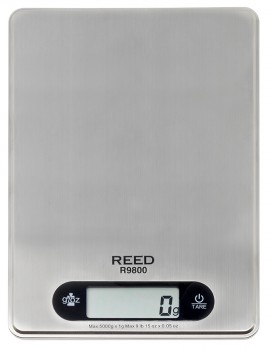- Sign In
- |
- Sign Up
- |
- My Quote (0)
- |
- CART (0)
Are you wondering why you should be using a scale for baking?
We will go over the reasons why to get a scale and the steps required to properly use it for weighing your ingredients.
Using a scale is the optimal way of getting your ingredients ready for making your baked goods. While baking, you will come across a variety of different types of flour and other ingredients. They all have different volumes and weight. Without knowing the density of the ingredients we are measuring with cups makes it imprecise and comes with a larger margin of errors. All types of flour will have different tightness in their texture which makes it even easier to do improper calculations using cups. A lot goes into measuring using a cup, leveling the ingredient, transfering and making it more or less compact. Everything adds up to the complexity and the inconsistency.

On the other hand, using a scale will always let you have the same amount of an ingredient, because 1 gram of flour will always be 1 gram. Using weight can also help you scale your recipe up or down. You will most likely save on the clean up time as you don't have to dirty up a lot of different cups.
Make sure to take a scale that has different unit measurements such as grams and ounces. The model you select should have the tare option. Tare weight is the weight of an empty container, so in this context it means you will have the ability to remove the weight of the bowl so you can only measure the ingredient. This feature lets you add more ingredient in the same bowl while repeating the tare option to put your scale to zero in between ingredients.
* It's the user responsability to get the required education and to take all the safety precautions. Read all the Health and safety documentation that has been provided with your scale.